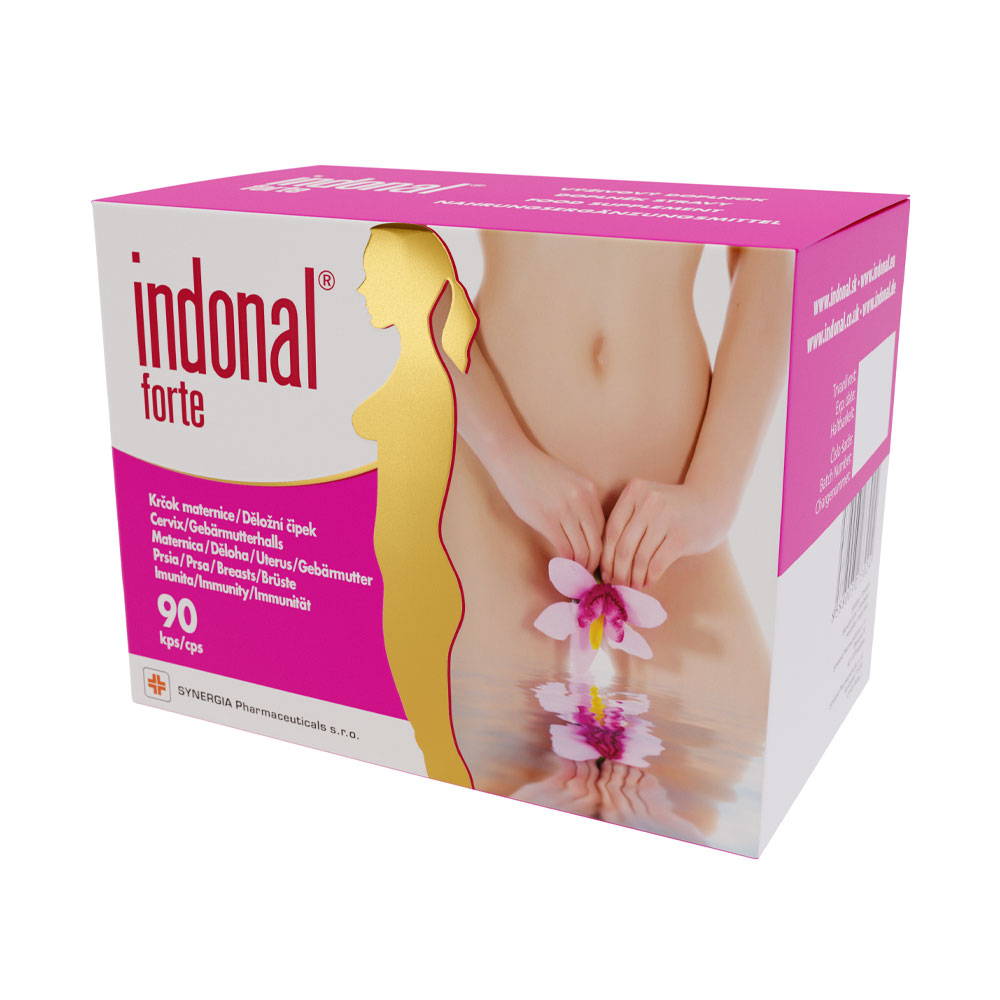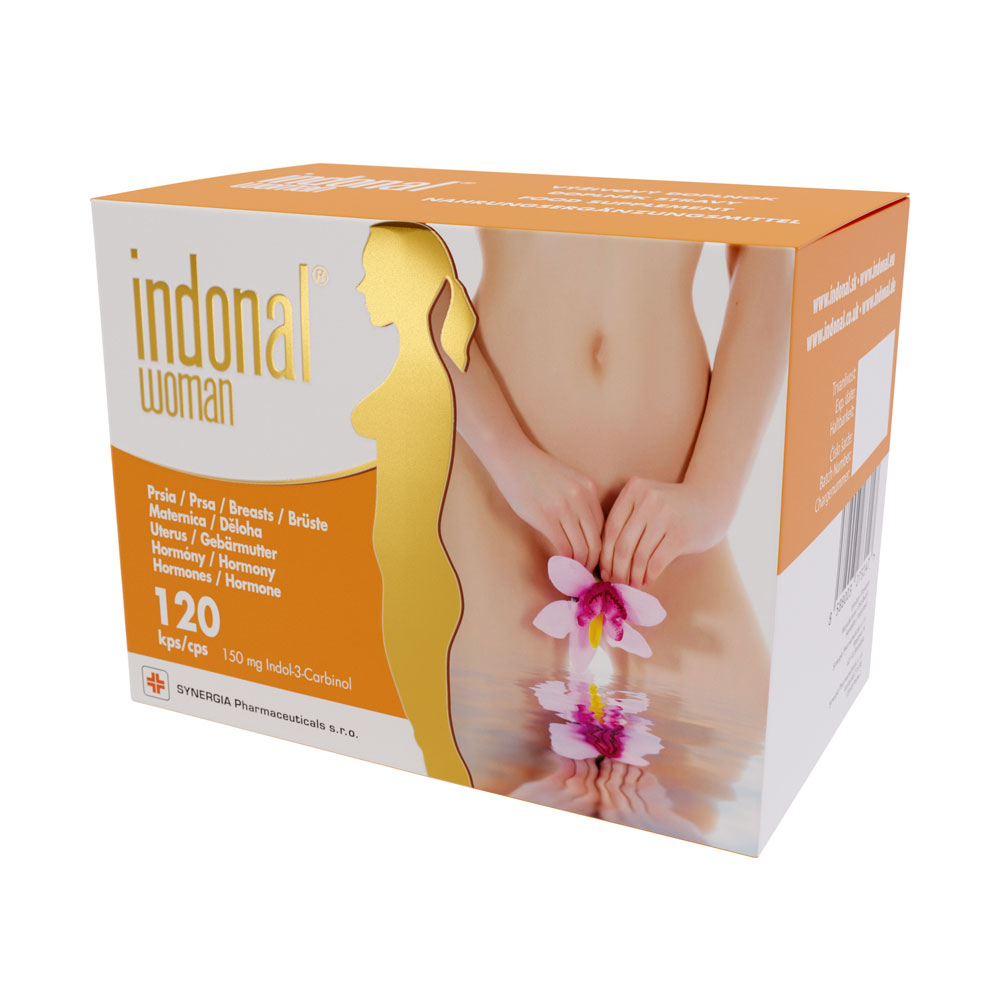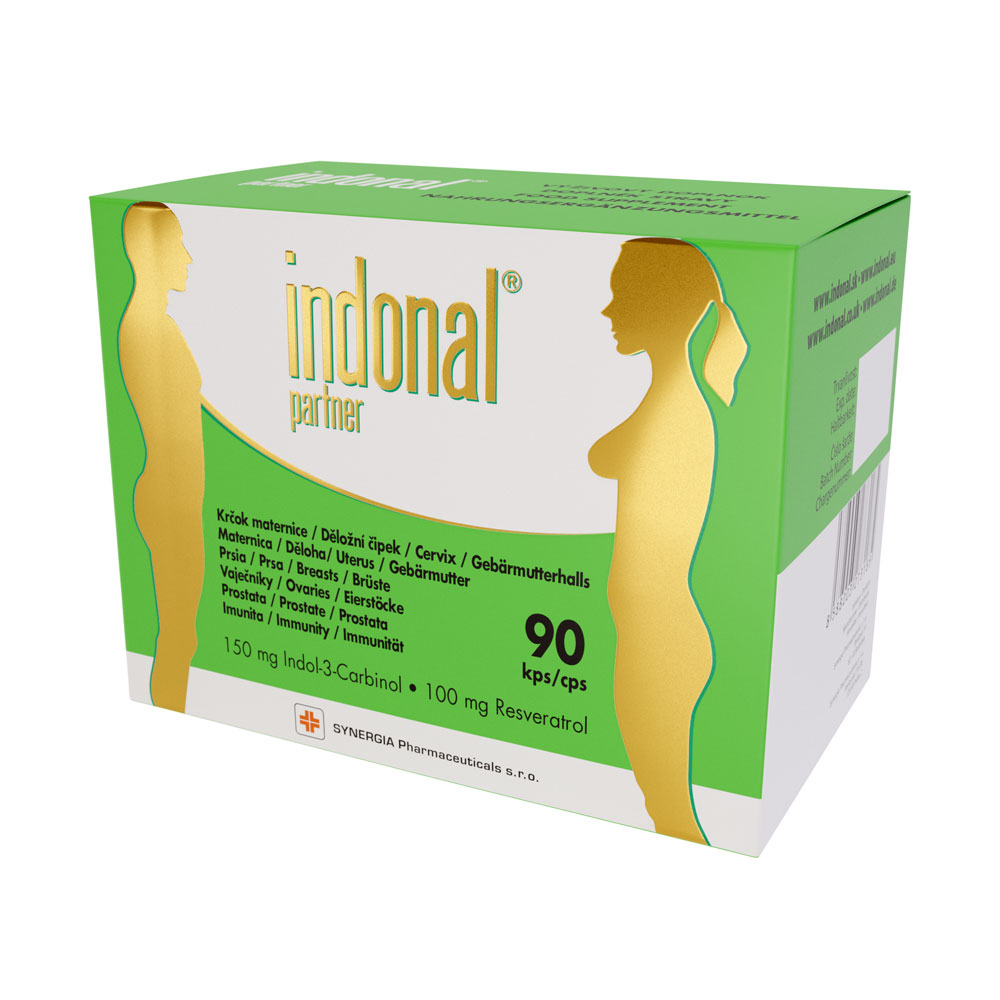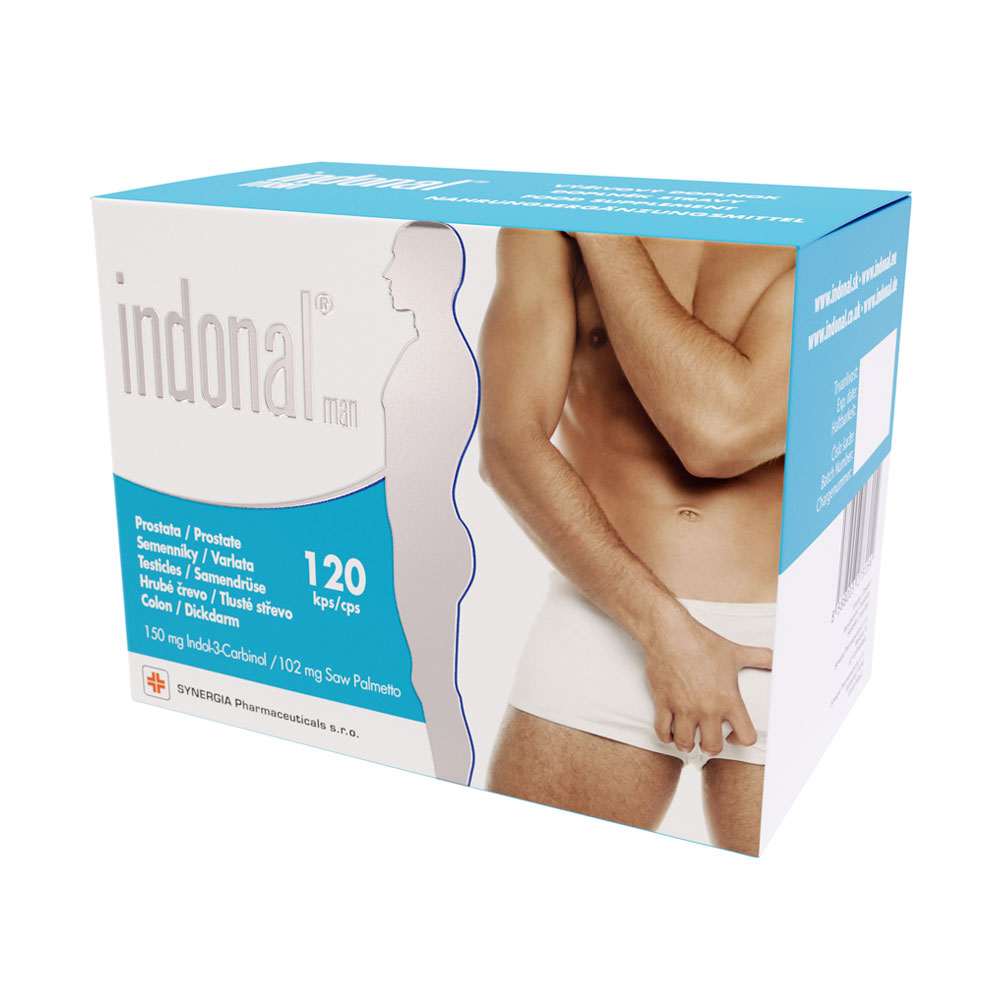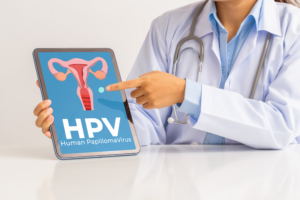I3C and cervical lesions
Mikuláš Redecha
II Gynecology and Obstetrics Clinic of LFUK and UNB
Address: gynecology and obstetrics clinic LFUK and UNB
Ružinovská 6
821 01, Bratislava
Summary:
The indole derivative, indole-3-carbinol (I3C), is a naturally occurring substance in some plants. It inhibits cell proliferation, arrests the cell cycle in the G1 phase, and induces apoptosis to suppress tumorigenesis. Thus, its use could be helpful in the prevention and treatment of certain diseases, including cervical lesions. However, the molecular mechanisms by which the indole suppresses tumorigenesis are not well known. Women with cervical intraepithelial neoplasia II and III (CIN II/III) have a lower ratio of 2-hydroxyestrone to 16α-hydroxyestrone compared to women with a physiological finding on the uterine cervix epithelium. I3C effectively increases the 2-hydroxylation of estrogen in liver cells and promotes the formation of 2-hydroxyestrone at the expense of 16α-hydroxyestrone. I3C could, therefore, be used as an add-on to the treatment of cervical lesions. However, its use is broad-spectrum. At present, there are several formulas and nutritional supplements containing indole-3-carbinol available on the market. The recommended daily dose of I3C is 200-400 mg twice daily for at least 4 weeks.
Key words: Indole-3-carbinol, indole derivatives, carcinogenesis, tumorigenesis suppression, cervical lesions
Introduction:
Indoles are aromatic heterocyclic organic compounds, serving as precursors for many pharmaceutical substances. Indole-3-carbinol (I3C) is a phytochemical found in cruciferous vegetables, such as cabbage, broccoli, Brussels sprouts, and cauliflower. Recent studies suggest that I3C has the potential to prevent and even treat certain types of cancer, particularly those related to estrogen metabolism [1].
Indole derivatives like I3C and 3,3′-diindolylmethane (DIM) can be synthesized in various ways. In vitro studies have demonstrated that I3C and DIM inhibit cell proliferation, arrest the cell cycle in the G1 phase, and induce apoptosis [1]. However, the exact molecular mechanisms by which indoles suppress tumorigenesis remain unknown. It is clear, though, that indoles influence estrogen metabolism and regulate the expression of multiple genes involved in the control of the cell cycle, cell proliferation, apoptosis, signal transduction, angiogenesis, and cell invasion. In animal models, indoles have shown preventive effects against the development of breast and prostate tumors [2].
Indole-3-carbinol rapidly converts in the stomach to several condensation products, including diindolylmethane (DIM), indolylcarbazole (ICZ), and 2-(indol-3-ylmethyl)-3,3′-diindolylmethane (L-Trl) [2]. Although no I3C was detected in human plasma or in the plasma of rats receiving I3C, high amounts of DIM and other metabolites were detected [3]. These metabolic products are the main compounds initially available to cells after I3C ingestion. Laboratory observations suggest that I3C may act in various ways to prevent the transformation or progression of cancer, and it can selectively kill transformed cells.
Indole derivatives, investigated in phases I and II of clinical trials, have shown potential as chemoprotective agents in breast, ovarian, vulvar intraepithelial neoplasia, and colon cancer. Preliminary findings from these studies indicate significant clinical improvement without accompanying side effects. Indole derivatives, including I3C, may be used in the prevention and treatment of both hormone-dependent and hormone-non-dependent cancer diseases once sufficient data from ongoing studies are obtained [2,4].
As one of the indole derivatives, Indole-3-carbinol (I-3-C) naturally occurs in plant foods. Oral use of I3C affects estrogen metabolism, increasing the ratio between 2-hydroxyestrone and 16-hydroxyestrone. This ratio is a predictive risk factor for developing breast cancer. Other beneficial effects of I3C and its metabolites have been observed in animal models and in vitro studies, including the inhibition of estrogen binding and modulation of oncogene expression [1,4]. Despite some surprising suggestions of a tumor-stimulating effect in chemical carcinogenesis analyses, epidemiological studies support the hypothesis that a high intake of I3C may have a significant chemoprotective effect. I3C is well-tolerated with lasting estrogen-modifying effects, making it a suitable candidate for clinical testing in women at high risk of developing breast cancer. However, further prospective, randomized clinical trials are needed to precisely evaluate its effects due to its potentially broad beneficial impact [4].
I3C and Lesions of the Cervix
The identification of cervical precancers, such as LG-SIL, HG-SIL, or CIN I-III, is common in gynecological practice. Urinary estrogen metabolites can serve as predictors of cervical cancer risk. Women with cervical intraepithelial neoplasia II/III (CIN II/III) exhibit a lower 2:16α-hydroxyestrone ratio compared to women with normal cervical findings [4]. Indole-3-carbinol (I3C), through its effect on cytochrome P-450, alters the pathway of estrogen metabolism in both women and men, reducing the risk of certain tumors [5-7]. Metabolism is changed by inducing a specific cytochrome P-450 isoform via the aryl receptor, where DIM is only a weak ligand for this receptor [8,9]. The metabolic degradation of estradiol by liver cells leads to the formation of 2-hydroxyestrone or 16α-hydroxyestrone and, to a lesser extent, the production of 4-hydroxyestrone, a relatively potent carcinogen. 16α-hydroxyestrone induces the proliferation of some breast tumor cell lines, while 2-hydroxyestrone has anti-estrogenic and anti-proliferative activity [10,11]. Patients with CIN II or III have a lower ratio of 2-hydroxyestrone to 16α-hydroxyestrone compared to women without cervical lesions [4]. One treatment approach could involve increasing the 2-hydroxylation process, thereby elevating the level of 2-hydroxyestrone. Oncogenic viruses significantly alter the ratio of 2-hydroxyestrone and 16α-hydroxyestrone. Directly reducing 16α-hydroxylation has proven ineffective, but by upregulating 2-hydroxylation, estradiol is metabolized to a benign product at the expense of 16α-hydroxylation. Several compounds have shown effectiveness in upregulating 2-hydroxylation, with I3C being identified as the most effective [12]. Additionally, indole-3-carbinol appears to suppress 4-hydroxylation activity [13].
Bell et al. conducted a double-blind, placebo-controlled trial with 30 punch-biopsy-confirmed CIN II/III patients, randomized into three groups: placebo, 200mg, or 400mg of I3C daily for 12 weeks [14]. Three patients did not complete the study. In the placebo group, none of the 10 patients showed complete regression of CIN findings. In contrast, four of eight patients in the 200 mg/day group and four of nine patients in the 400 mg/day I3C group exhibited complete regression of CIN findings with controlled I3C use. The maximum dose used in this study (400 mg of I3C per day) is equivalent to the amount found in one-third of a mature head of cabbage. In this and previous studies, no adverse or side effects were noted with I3C use. Although this study involved a small number of patients, the results were statistically significant.
Chen et al. conducted an interesting study monitoring the influence of both I3C and DIM on human cervical carcinoma cell lines in in-vitro conditions. Both compounds induced apoptosis in the cervical epithelium of HPV16 transgenic mice, suggesting their potential use as chemotherapeutics. In vitro, I3C has been shown to block estrogen-promoted HPV expression, making it a potential adjunct in efforts to clear the HPV virus in HPV-positive women [15,16].
The antiestrogenic activity of I3C could potentially synergize with drugs like tamoxifen. However, I3C and tamoxifen appear to work by different mechanisms. Additionally, I3C stimulates apoptosis in estrogen-negative human breast cancer cell lines [17].
Recommendations for practice:
I3C is generally well-tolerated in the range of 400 to 800 mg per day. In a recent study involving 17 women at high risk of developing breast cancer, doses of I3C up to 800 mg per day were utilized. This dosage was well-tolerated by all patients in the study, with no reported side effects [18]. There are reports of side effects associated with I3C at doses above 800 mg per day, but these appear to be individual cases [19]. For instance, one patient taking 400 mg of I3C twice a day experienced tremors and dizziness, which subsided when the dose was halved. In rare instances, children who accidentally took higher doses experienced temporary symptoms such as dizziness and nausea, with no persistent effects after discontinuation of treatment. Animal model studies have used very high doses of I3C without toxic symptoms, achieving tissue concentrations much higher than those typically seen with therapeutic doses [20].
The usual recommended dose of I3C is 200-400 mg per day. Some studies have shown a significant increase in the 2:16α-hydroxyestrone ratio at doses of 300-400 mg of I3C per day for four weeks [19,21]. Currently, a daily dose of I3C ranging from 200-400 mg for at least 4 weeks is recommended to achieve a beneficial effect in the treatment of cervical lesions and in the pursuit of HPV clearance [21].
Conclusion:
Clinical trials involving nutritional supplements, even those focused on preventing cervical cancer, often have shortcomings. They lack sufficient information with quality data analyses and provide inadequate or inaccurate information about the specific intervention of the monitored molecule in the carcinogenesis process. Moreover, there’s insufficient data on treatment duration and long-term patient follow-up. However, current knowledge indicates that nutritional factors significantly impact normal cervical epithelium changes, preinvasive cervical lesions, and carcinoma progression. Despite the challenges, dietary supplements may be effective in preventing and managing cervical dysplasia, especially when blood parameters indicate nutrient deficiencies. I3C, among dietary supplements, is closely monitored for its beneficial effects in tumorogenesis, preventing cervical lesions and cancer, as well as other cancer types like breast cancer. While we know more about its precise mechanism, further prospective and randomized studies are necessary to accurately assess its effectiveness and determine the optimal dosage.
References:
- Grubbs CJ, Steele VE, Casebolt T, et al. Chemoprevention of chemically-induced mammary carcinogenesis by indole-3-carbinol. Anticancer Res 1995;15:709-716.
- Grose KR, Bjeldanes LF. Oligomerization of indole-3-carbinol in aqueous acid. Chem Res Toxicol 1992;5:188-193.
- Stresser DM, Williams DE, Griffen DA, Bailey GS. Mechanisms of tumor modulation by indole-3-carbinol. Disposition and excretion in male Fischer 344 rats. Drug Metab Dispos 1995;23:966-975.
- Newfield L, Goldsmith A, Bradlow HL, et al. Estrogen metabolism and human papillomavirusinduced tumors of the larynx: chemo-prophylaxis with indole-3-carbinol. Anticancer Res 1993;13:337-341.
- Telang NT, Suto A, Wong GY, et al. Induction by estrogen metabolite 16 alpha-hydroxyestrone of genotoxic damage and aberrant proliferation in mouse mammary epithelial cells. J Natl Cancer Inst 1992;84:634-638.
- Stoewsand GS, Anderson JL, Munson L. Protective effect of dietary brussels sprouts against mammary carcinogenesis in SpragueDawley rats. Cancer Lett 1988;39:199-207.
- Zeligs MA. Diet and estrogen status: the cruciferous connection. J Med Food 1998;1:67- 81
- Auborn KJ, Woodworth C, DiPaolo JA, et al. The interaction between HPV infection and estrogen metabolism in cervical carcinogenesis. Int J Cancer 1991;49:867-869.
- Chen I, McDougal A, Wang F, et al. Aryl hydrocarbon receptor-mediated antiestrogenic and antitumorigenic activity of diindolylmethane. Carcinogenesis 1998;19:1631-1639.
- Schneider J, Huh MM, Bradlow HL, et al. Antiestrogen action of 2-hydroxyestrone on MCF-7 human breast cancer cells. J Biol Chem 1984;259:4840-4845.
- Suto A, Bradlow HL, Wong GY, et al. Experimental down-regulation of intermediate biomarkers of carcinogenesis in mouse mammary epithelial cells. Breast Cancer Res Treat 1993;27:193-202.
- Niwa T, Swaneck G, Bradlow HL. Alterations in estradiol metabolism in MCF-7 cells induced by treatment with indole-3-carbinol and related compounds. Steroids 1994;59:523-527.
- Bradlow HL, Sepkovic DW, Telang NT, et al. Indole-3-carbinol. A novel approach to breast cancer prevention. Ann N Y Acad Sci 1995;768:180-200.
- Bell MC, Crowley-Nowick P, Bradlow HL, et al. Placebo-controlled trial of indole-3-carbinol in the treatment of CIN. Gynecol Oncol 2000;78:123-129.
- Chen DZ, Qi M, Auborn KJ, et al. Indole3-carbinol and diindolylmethane induce apoptosis of human cervical cancer cells and in murine HPV 16-transgenic preneoplastic cervical epithelium. J Nutr 2001;131:3294-3302.
- Yuan F, Chen DZ, Sepkovic DW, et al. Antiestrogenic activities of indole-3-carbinol in cervical cells: implication for prevention of cervical cancer. Anticancer Res 1999;19:1673-1680.
- Telang NT, Katdare M, Bradlow HL, et al. Inhibition of proliferation and modulation of estradiol metabolism: novel mechanisms for breast cancer prevention by the phytochemical indole-3- carbinol. Proc Soc Exp Biol Med 1997;216:246- 252.
- Ho GH, Luo XW, Ji CY, et al. Urinary 2/16 alphahydroxyestrone ratio: correlation with serum insulin-like growth factor binding protein-3 and a potential biomarker of breast cancer risk. Ann Acad Med Singapore 1998;27:294-299.
- Rosen CA, Woodson GE, Thompson JW, et al. Preliminary results of the use of indole-3 carbinol for recurrent respiratory papillomatosis. Otolaryngol Head Neck Surg 1998;118:810-815.
- Stresser DM, Williams DE, Griffin DA, Bailey GS. Mechanisms of tumor modulation by indole-3-carbinol. Disposition and excretion in male Fischer 344 rats. Drug Metab Dispos 1995;23:965-975.
- Wong GY, Bradlow L, Sepkovic D, et al. Doseranging study of indole-3-carbinol for breast cancer prevention. J Cell Biochem Suppl 1997;28-29:111- 116.






